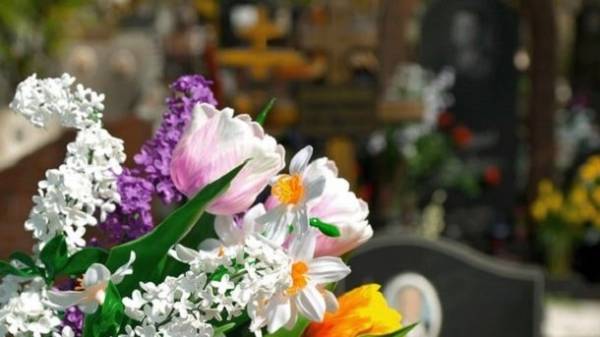
After Easter in Ukraine begins memorial week, which follows Passover and ends on the 9th day after the holiday. This period is called the graves, wires, commemoration, day of rejoicing, grebkami. Central to remembrance day is Tuesday 25 April, but for the convenience of working people, the remembrance began early, at the weekend, writes the TV channel “112 Ukraine”.
A spring commemoration of relatives before the adoption of Christianity. But the belief that the dead continue to live the afterlife, preserved in later times. Therefore, an annual remembrance of relatives during the spring awakening of nature, according to popular notions, was to attach the “fathers” and “grandfathers” to the cycle of life – death – life.
Specially to commemorate the Ukrainians baked the cakes (or have them left from Easter), cakes, pies, painted eggs, cooked Koleva (such as on memorial days of fasting), etc.
Koleva, eve, fed – dish, with which Ukraine has always begin the memorial meal and the day of the funeral, and “deviatiny”, and “forty days”, and on the memorial anniversary. It not only consume when dining at home, but also take in the Church service (a funeral and a memorial service) and the cemetery to give to the mourners and elders. Common name of the food in Ukraine – Koleva, on the right Bank and in the southern part of eve, and in some areas of the woodlands – full. Coliva is most often prepared as a Christmas pudding from uncrushed crushed wheat or barley grains. Spread cereal in a bowl, sprinkled with honey or sugar syrup, and the top is decorated with a cross made of raisins or sweets, candy.
Coliva has a long history. In medieval sources repeatedly mention seasoned with honey porridge as a funeral dish. In some Northern areas of Ukraine kutya replace wheat bread (bagels, flat bread, gingerbread): their finely crumbled in a bowl and pour honey.
The public funeral took place in two ways: the people gathered and dined the whole world to free the cemetery or the village Church or made the tablecloth between the graves and commemorated their dead in groups.
In addition coliva with honey, every woman definitely was prepared for the “his” of the dead dishes that are especially loved in life. The egg part of these dishes, a little coliva, and sometimes even vodka left on the grave, vodka also sprinkled the ground. Gave rich alms Easter eggs, bread and other foods, shared food between families, the full-fed the elders. An obligatory dish on the Wires was pancakes (crepes, pancakes).
In our time, to commemorate mostly handed out candy, cookies, cakes. The main thing here is not to exchange sweets and give to the needy. The Church notes that feeding the hungry means to approach the Lord. Therefore it is impossible to chase people gathering at the cemetery food. Ideally, the Wake, everyone brings what he can, and at the table everyone is equal, but the alcohol taboo.
Remembering the dead ancestors, you can not call them dead, because these days “they can hear what they are talking about say that.” Better to call them relatives, in-laws and friends.







